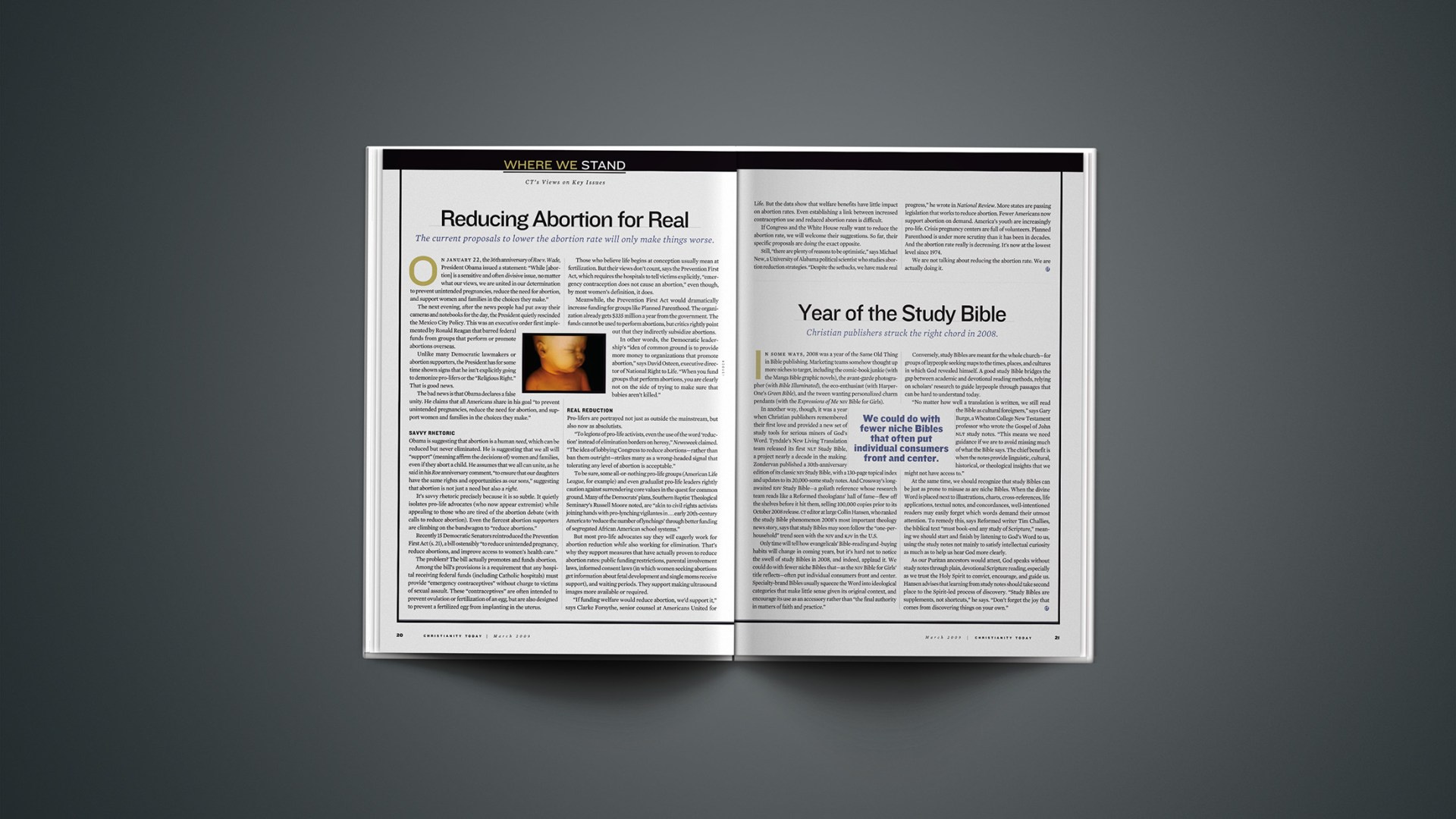In some ways, 2008 was a year of the Same Old Thing in Bible publishing. Marketing teams somehow thought up more niches to target, including the comic-book junkie (with the Manga Bible graphic novels), the avant-garde photographer (with Bible Illuminated), the eco-enthusiast (with HarperOne’s Green Bible), and the tween wanting personalized charm pendants (with the Expressions of Me NIV Bible for Girls).
In another way, though, it was a year when Christian publishers remembered their first love and provided a new set of study tools for serious miners of God’s Word. Tyndale’s New Living Translation team released its first NLT Study Bible, a project nearly a decade in the making. Zondervan published a 30th-anniversary edition of its classic NIV Study Bible, with a 130-page topical index and updates to its 20,000-some study notes. And Crossway’s long-awaited esv Study Bible—a goliath reference whose research team reads like a Reformed theologians’ hall of fame—flew off the shelves before it hit them, selling 100,000 copies prior to its October 2008 release. CT editor at large Collin Hansen, who ranked the study Bible phenomenon 2008’s most important theology news story, says that study Bibles may soon follow the “one-per-household” trend seen with the NIV and KJV in the U.S.
Only time will tell how evangelicals’ Bible-reading and -buying habits will change in coming years, but it’s hard not to notice the swell of study Bibles in 2008, and indeed, applaud it. We could do with fewer niche Bibles that—as the NIV Bible for Girls’ title reflects—often put individual consumers front and center. Specialty-brand Bibles usually squeeze the Word into ideological categories that make little sense given its original context, and encourage its use as an accessory rather than “the final authority in matters of faith and practice.”
Conversely, study Bibles are meant for the whole church—for groups of laypeople seeking maps to the times, places, and cultures in which God revealed himself. A good study Bible bridges the gap between academic and devotional reading methods, relying on scholars’ research to guide laypeople through passages that can be hard to understand today.
“No matter how well a translation is written, we still read the Bible as cultural foreigners,” says Gary Burge, a Wheaton College New Testament professor who wrote the Gospel of John NLT study notes. “This means we need guidance if we are to avoid missing much of what the Bible says. The chief benefit is when the notes provide linguistic, cultural, historical, or theological insights that we might not have access to.”
At the same time, we should recognize that study Bibles can be just as prone to misuse as are niche Bibles. When the divine Word is placed next to illustrations, charts, cross-references, life applications, textual notes, and concordances, well-intentioned readers may easily forget which words demand their utmost attention. To remedy this, says Reformed writer Tim Challies, the biblical text “must book-end any study of Scripture,” meaning we should start and finish by listening to God’s Word to us, using the study notes not mainly to satisfy intellectual curiosity as much as to help us hear God more clearly.
As our Puritan ancestors would attest, God speaks without study notes through plain, devotional Scripture reading, especially as we trust the Holy Spirit to convict, encourage, and guide us. Hansen advises that learning from study notes should take second place to the Spirit-led process of discovery. “Study Bibles are supplements, not shortcuts,” he says. “Don’t forget the joy that comes from discovering things on your own.”
Copyright © 2009 Christianity Today. Click for reprint information.
Related Elsewhere:
Collin Hansen wrote about the study Bibles as part of his top 10 theology stories of 2008. More editorials are available on our site.










